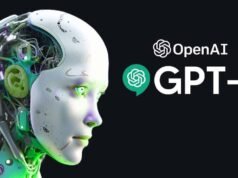Understanding the GPT-5 Capabilities & Quest for Interpretability
As the landscape of artificial intelligence expands, the quest to fathom the intricate workings of language models intensifies. OpenAI’s exploration of GPT-5 marks a significant leap in comprehending these models. Particularly in shedding light on the elusive actions of neurons.
In its relentless pursuit to unravel the inner workings of language models, OpenAI leverages the capabilities of GPT-4. This predecessor autonomously generates descriptions elucidating the actions of neurons within extensive language models and subsequently evaluates these descriptions. Although imperfect, this endeavor has led to the release of a dataset encompassing. These neuron descriptions along with their respective scores for each neuron within GPT-2. With GPT-5’s advent, these explorations expand further.
Challenges in Model Interpretability “GPT-5 Capabilities“
Understanding the intricate mechanisms driving language models has been a daunting task for researchers. The quest for interpretability delves into discerning whether. These models operate based on biased heuristics or, at times, produce deceptive outputs. Shedding light on these aspects remains a crucial aim in comprehending the inner workings of these AI models.
A fundamental strategy in this interpretability research. This involves comprehending the functions of individual components within these models, such as neurons and attention heads. Traditionally, this involved laborious manual inspection to identify the data features represented by neurons. However, the scalability of this method dwindles when faced with neural networks housing tens or hundreds of billions of parameters.

OpenAI’s Innovative Approach
OpenAI introduces an innovative approach utilizing GPT-4 to autonomously generate and assess natural language explanations. Pertaining to neuron behavior, a process subsequently applied to neurons within other language models.
This initiative forms a vital part of the third pillar in alignment research—automating. The very work involved in alignment research. A promising aspect of this strategy lies in its scalability alongside the progression of AI. As future iterations of these models, like GPT-5 and beyond, evolve in intelligence and utility as assistants. The insights gleaned from their explanations will likely deepen.
Methodology and Limitations
The methodology entails three critical steps for every neuron:
1: Generate an Explanation using GPT-4
2: Simulate using GPT-4
3: Compare the Results
OpenAI takes strides in open-sourcing datasets and visualization tools containing GPT-4-generated explanations for all 307,200 neurons within GPT-2. Furthermore, they release the code necessary for creating and evaluating these explanations using models accessible via the OpenAI API.
Their findings have unveiled over 1,000 neurons with explanations scoring at least 0.8. Indicating a substantial representation of the neuron’s top-activating behavior according to GPT-4.
Looking Ahead GPT-5 Capabilities Challenges and Future Prospects
Looking ahead, OpenAI acknowledges several constraints within its current methodology, which it aims to overcome in subsequent research endeavors.
The focus primarily remains on succinct natural language explanations, potentially overlooking highly complex behaviors exhibited by neurons. Some neurons might encapsulate intricate polysemantic concepts or signify singular concepts beyond human comprehension or terminology.
The aspiration is to elucidate entire neural circuits exhibiting complex behaviors. Involving collaborations between neurons and attention heads remains a future goal. However, the existing method solely expounds on neuron behavior based on the original text input, lacking insight into downstream effects.
Conclusion and Future Directions
Despite these challenges, OpenAI remains optimistic about the potential extensions and generalizations of their approach. Their ultimate ambition revolves around utilizing models to form, test, and refine fully comprehensive hypotheses. Akin to the work of an interpretability researcher.
Their overarching goal involves interpreting their largest models to unearth alignment and safety issues both pre and post-deployment. However, substantial progress is imperative before these techniques can effectively uncover behaviors such as dishonesty.
Stay updated with more insightful articles by exploring our blog.









